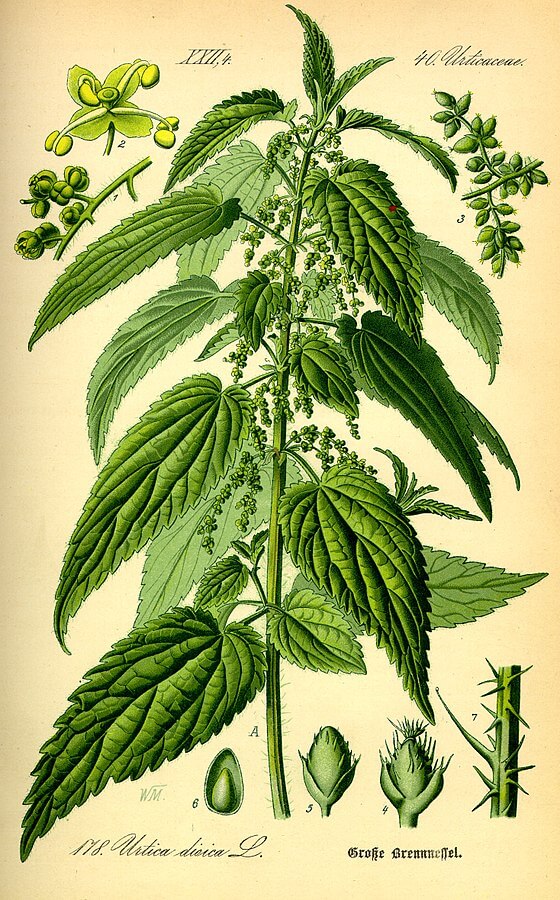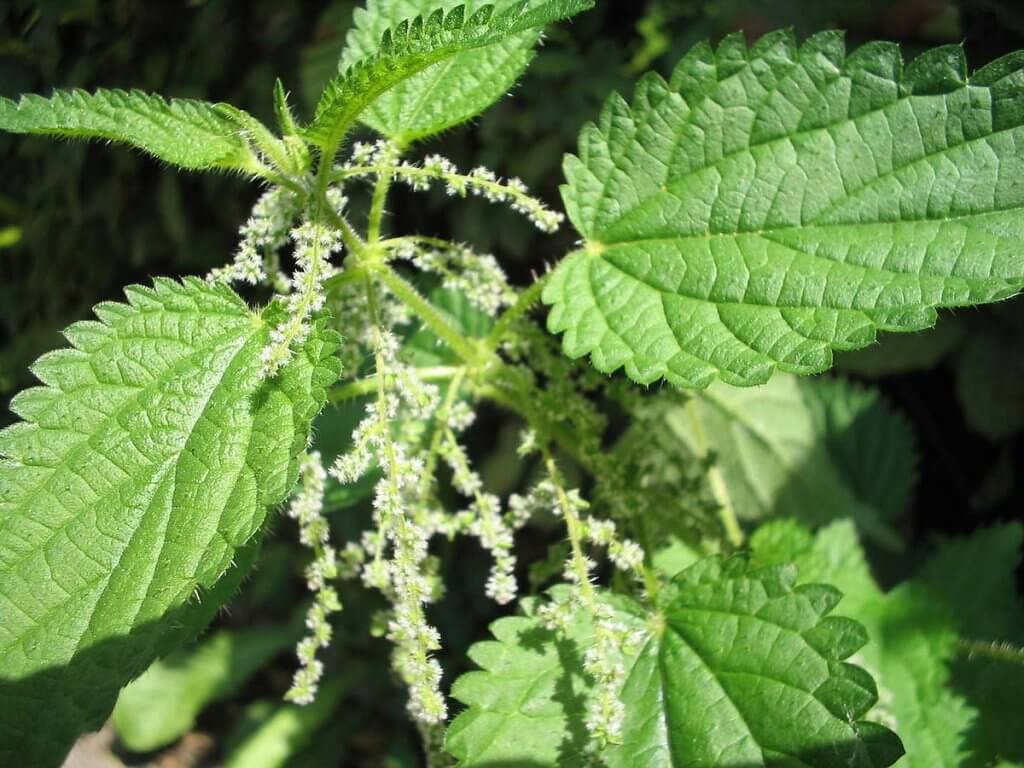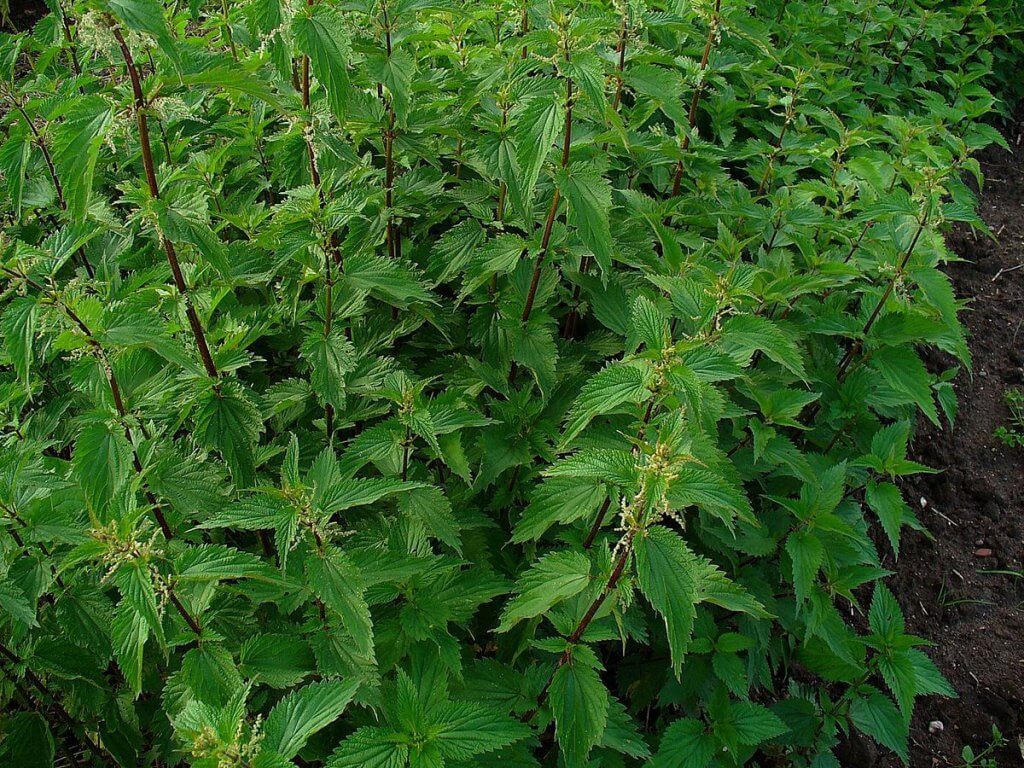
(Photo by: Otto Wilhelm Thomé/Wikimedia Commons)
Stinging nettle (Urtica dioica) is usually dismissed as a harmful weed due to its stinging hair. But in reality, this plant is actually one of the most beneficial and nutritious wild edibles out there. In some cultures, stinging nettle has even been used as a traditional medicine and food source since ancient times. This vitamin-rich herb has been used for hundreds of years to treat various ailments, such as eczema, arthritis, gout, and anemia.
Stinging nettle was originally from Europe and West Asia, but now it can be found growing all over the world. This perennial herb is included in the Urticaceae family due to their stinging hair (trichome). While these stinging hairs can irritate the skin, they can actually be useful with proper preparation. They contain natural histamine which can actually help alleviate allergy symptoms.
Edibility and culinary use
Stinging nettle leaves, stems, and roots are all edible. It’s recommended to use young leaves for cooking and remember that stinging nettle must never be eaten raw. Cooking this herb will eliminate its pesky stinging properties, making them a delicious addition to your daily diet. The easiest way to consume stinging nettle is to brew it to make herbal tea or to infuse it in your drinking water. Stinging nettle tea has a pleasant, earthy flavor that goes great with lemon and honey.
Stinging nettle leaves make an excellent spinach substitute. These leaves can be sauteed, added to bread or pasta dough, or even made into pesto. They can also be added to green salads, just make sure to blanch them first to remove their stinging properties. The water from blanching them can be consumed as a tea. Nettle leaves and young shoots can also be a wonderful addition in soups and stews. Lastly, if you love brewing your own beer, try making a delicious nettle beer by brewing young nettle shoots.
Health benefits

(Photo by: Michael Gasperl/Wikimedia Commons)
Despite its reputation as a pain-causing weed, stinging nettle offers an excellent nutritional value. It’s rich in vitamin A, B complex, C, D, and K as well as iron, calcium, potassium, and silica. It’s also easy to use nettle as a medicinal supplement. You can add it to your daily diet by brewing the young leaves and roots to make herbal tea or tincture. You can also make nettle-infused water to drink each day. The infusion goes great with other herbs, such as clover, lemon balm, and raspberry leaf. Alternatively, you can apply it topically to help heal eczema and improve the appearance of your skin.
Traditionally, stinging nettle is used as a diuretic and body detoxifier. It has also been known to prevent and aid kidney stones. The histamine content has also been shown to prevent and treat hay fever as well as other mild allergies. Stinging nettle’s high vitamin C and iron content also make it great for improving circulation, controlling high blood pressure, stimulating red blood cell production, and relieving anemia. This herb can also relieve inflammatory conditions, such as rheumatic arthritis, gout, and chronic muscle pain. It has also been shown to improve prostate health and treat enlarged prostate gland. Lastly, nettle is great for feminine health as it can relieve PMS symptoms, relieve cramps and bloating, as well as controlling hormone levels.
Cultivation
While they can be found easily in the wild, there’s no reason why you shouldn’t grow stinging nettles in your own garden. This perennial herb is very easy to grow and don’t require much maintenance. You can gather the seeds from wild stinging nettle plants or buy some from a plant nursery.
To start, sow the tiny seeds indoors around 4 to 6 weeks before the last frost date. Once they’re big enough to handle, transplant them to your garden in early spring. Make sure to plant them in rich soil with full or partial sun exposure. Give approximately 10” space in between each plant. Water the plant regularly to keep the soil damp and moist.

(Photo by: H. Zell/Wikimedia Commons)
You should be able to start harvesting nettle leaves 90 days after sowing the seeds. It’s best to harvest them in early spring when the leaves are young and tender. But, you can harvest them all the way to early summer, right before the flowers blossom. Pick the top two or three pairs of leaves from the top and cut them with a pair of scissors. Don’t forget to wear protective clothes and gloves so you don’t get stung. If you do get stung, apply over-the-counter topical ointment immediately. They can be used immediately, but you can also dry or freeze them to store the leaves for future use.
Cautions
When handling stinging nettle, it’s recommended to wear gloves. The stinging hair which covers the leaves and stems can irritate the skin. When used appropriately, cooked stinging nettle is safe to consume. However, only young leaves should be used as older nettle leaves may irritate the kidneys when consumed.
Stinging nettle can induce menstruation and uterine contraction, so avoid consumption during pregnancy. This herb can also lower blood pressure and blood sugar levels. If you’re prone to either hypotension or hypoglycemia, consult your doctor before starting to use stinging nettle. Lastly, this herb may interact with some medications, such as blood thinning drugs, diuretics, and blood pressure drugs.
Conclusion
Despite its annoying spiky exterior, stinging nettle is an amazing wild edible. With all of its nutritional contents and medicinal benefits, adding stinging nettle to your daily diet will definitely keep you healthy and energized. Several studies have even backed up the benefits of using stinging nettle as a herbal remedy. Curious? Try cultivating this herb in your garden or if you don’t want to deal with the stinging leaves, you can easily find stinging nettle capsules and extract online.
---------------
Writen by Cornelia Tjandra
Cornelia is a freelance writer with a passion for bringing words to life and sharing useful information with the world. Her educational background in natural science and social issues has given her a broad base to approach various topics with ease. Learn more about her writing services on Upwork.com or contact her directly by email at cornelia.tjandra@gmail.com
Many of our readers find that subscribing to Eat The Planet is the best way to make sure they don't miss any of our valuable information about wild edibles.
See our privacy policy for more information about ads on this site






